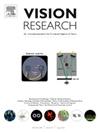弱视病史儿童在精确抓握和放置任务中的眼手协调。
IF 1.4
4区 心理学
Q4 NEUROSCIENCES
引用次数: 0
摘要
眼手协调是视觉运动控制的一个关键方面,对执行大多数日常活动至关重要。视觉运动控制的中断,以手臂运动缓慢和抓握错误为特征,已经在弱视儿童中得到证实。本研究旨在描述弱视在执行涉及伸手、精确抓取和放置的任务时对眼手协调的时间模式的影响。这项研究招募了28名有弱视病史的儿童和56名正常发育的同龄人(年龄在6-14岁之间)。孩子们在执行穿线任务时,他们的眼睛和手的运动同时被记录下来。正如假设的那样,弱视儿童表现出较差的任务表现,与到达(运输)部分相比,他们在物体操作方面的缺陷更大。与视力正常的同龄人相比,弱视儿童启动眼手动作的反应时间更短,引导抓握执行和物体放置的物体注视时间更长,第二次动作的眼手潜伏期差更小,说明手动作先于眼手动作。这些结果表明弱视儿童的运动计划能力较差,影响运动执行。在物体操作过程中,长时间的注视表明需要更多的时间将嘈杂的视觉输入转化为运动反应。总的来说,这项研究增加了越来越多的证据,强调了弱视在视觉运动控制方面的缺陷。本文章由计算机程序翻译,如有差异,请以英文原文为准。
Eye-hand coordination during a precision grasping and placement task in children with a history of amblyopia
Eye-hand coordination is a key aspect of visuomotor control essential for performing most daily activities. Disruption in visuomotor control, characterized by slower arm movements and grasping errors, has been documented in children with amblyopia. This study aimed to characterize the effects of amblyopia on the temporal pattern of eye and hand coordination during the performance of a task that involves reaching, precision grasping, and placement. The study recruited 28 children with a history of amblyopia and 56 typically developing peers (age range 6–14 years). Children performed a bead-threading task while their eyes and hand movements were recorded concurrently. As hypothesized, children with amblyopia demonstrated poorer task performance, with greater deficits for the object manipulation compared to the reaching (transport) components. In comparison to their peers with normal vision, children with amblyopia had shorter reaction time for initiating eye and hand movement, longer object fixation duration to guide grasp execution and object placement, and lower eye-hand latency difference for the second movement indicating that the hand movement preceded eye initiation. These results suggest that children with amblyopia have poorer motor planning ability, which impacts movement execution. Longer fixations during object manipulations indicate that more time is required to transform the noisy visual input into a motor response. Overall, the study adds to the growing body of evidence highlighting deficits in visuomotor control in amblyopia.
求助全文
通过发布文献求助,成功后即可免费获取论文全文。
去求助
来源期刊

Vision Research
医学-神经科学
CiteScore
3.70
自引率
16.70%
发文量
111
审稿时长
66 days
期刊介绍:
Vision Research is a journal devoted to the functional aspects of human, vertebrate and invertebrate vision and publishes experimental and observational studies, reviews, and theoretical and computational analyses. Vision Research also publishes clinical studies relevant to normal visual function and basic research relevant to visual dysfunction or its clinical investigation. Functional aspects of vision is interpreted broadly, ranging from molecular and cellular function to perception and behavior. Detailed descriptions are encouraged but enough introductory background should be included for non-specialists. Theoretical and computational papers should give a sense of order to the facts or point to new verifiable observations. Papers dealing with questions in the history of vision science should stress the development of ideas in the field.
 求助内容:
求助内容: 应助结果提醒方式:
应助结果提醒方式:


